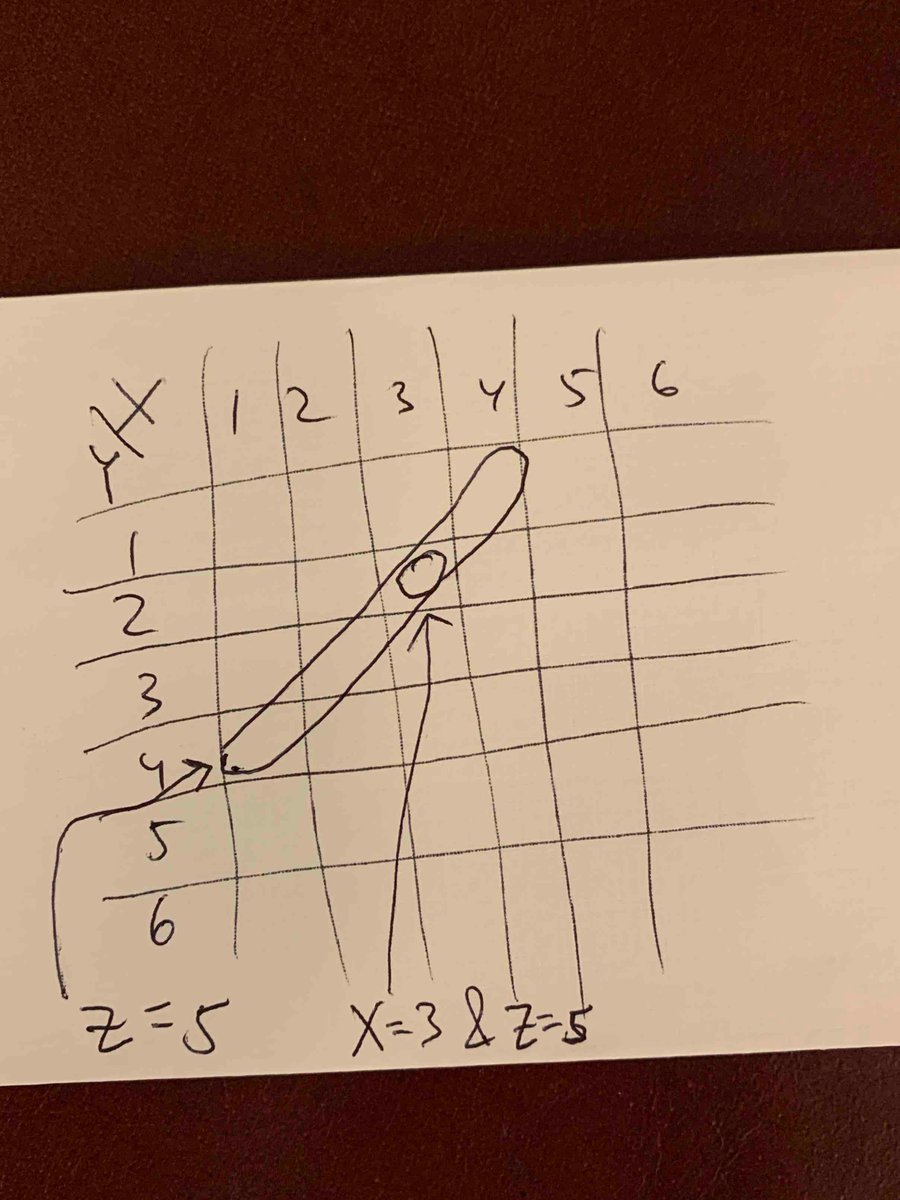The concept of conditional expectation is (surprisingly?) difficult for students, until they do the following exercise:
Let X and Y be iid 6-sided dice rolls, and let Z=X+Y be the sum. What is E(X|Z)? Def: E(X|Z)=sum x * Prob(X=x|Z). Not so enlightening. But space of values ... https://twitter.com/HarryDCrane/status/1299732603013038080">https://twitter.com/HarryDCra...
Let X and Y be iid 6-sided dice rolls, and let Z=X+Y be the sum. What is E(X|Z)? Def: E(X|Z)=sum x * Prob(X=x|Z). Not so enlightening. But space of values ... https://twitter.com/HarryDCrane/status/1299732603013038080">https://twitter.com/HarryDCra...
2/ of (X,Y) is small enough (6x6 table) that you can work through it completely explicitly. (Please really do this if you haven& #39;t before. E.g., Prob(X=3|Z=5)=1/4; see pic.)
*Spoiler*
You& #39;ll find that if Z=2, then E(X|Z=2)=1; if Z=3, E(X|Z=3)=1.5,..., if Z=12, E(X|Z=12)=6. So...
*Spoiler*
You& #39;ll find that if Z=2, then E(X|Z=2)=1; if Z=3, E(X|Z=3)=1.5,..., if Z=12, E(X|Z=12)=6. So...
3/ E(X|Z)=Z/2. What does this mean? This is the expected value of one of two identical die, knowing only the sum; what& #39;s our best guess for the value of one of the die? Half the sum, of course!
In general: E(X|Z) is a random variable (Z/2 is a RV!), which is the best guess ...
In general: E(X|Z) is a random variable (Z/2 is a RV!), which is the best guess ...
4/ for the value of X, given full knowledge of the outcome for Z. (Now generalize to sigma-algebras, filtrations, adapted processes, martingales, etc...)

 Read on Twitter
Read on Twitter


